We hope that each of you, our readers, will enjoy and appreciate this article we present about these 5 Intriguing African Insects. It was certainly our pleasure to compile the information for you. May it provide you with both education and increased awareness.
These few species listed herein represent only a portion of the natural wonders found throughout the world, though. Yet, it’s our belief that they serve as excellent representations of the wonders found here. Check out some of our other articles for similar marvels.
Hummingbird Hawk Moth
Hummingbird Hawk Moth Facts
- Leading off this article about these 5 Intriguing African Insects we present the beautiful creature known as the Hummingbird Hawk Moth.
- This Lepidoptera primarily goes by the common name across its entire known territory. Most entomologists, however, know it better by its official scientific name. That, though, is the hard to pronounce term of Macroglossum stellatarum.
- Whatever name one chooses to use to refer to it, it’s a fabulous creature. The first recognition of it as a separate and distinct species, meanwhile, occurred in the year 1758. It further owes its acknowledgement to a famous name in science.
- That’s because the famous Swedish botanist, Carl Linnaeus, made that original scientific classification of the species. He also published it in the 10th edition of his Systema Naturae. This gives the insect a historic place in the annals of entomology.
- Its relative fame doesn’t end there, though. That’s due to the fact that it held a place in important, groundbreaking scientific studies. More precisely, in 2018, a lengthy and detailed project completed the sequencing of its entire genome and mitogenome.
- There’s also more good news. For the moment, the Hummingbird Hawk Moth appears to be maintaining a sizeable and stable population. This delightful trend further seems to hold true throughout the entirety of its natural range.
- The IUCN, therefore, presently has no listing for it on the organizations Red List of Threatened Species. The species nonetheless could face threats to its existence in the future. That’s because habitat loss and climate change continue to escalate.
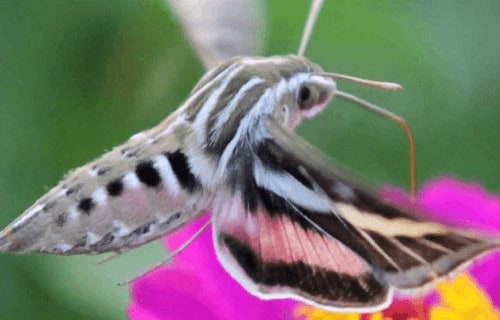
Hummingbird Hawk Moth Physical Description
The magnificent Hummingbird Hawk Moth adroitly proves that size holds no relation to beauty in Nature. This holds true since it only qualifies as a medium-sized type of moth, in terms of wingspan. Also unusually, it shows no noticeable sign of sexual dimorphism.
This lack of visual difference between the genders extends to both size and appearance. As a result, mature specimens of both sexes attain an average wingspan of about 1.8 in (4.6 cm). While not large, those wings nevertheless impress one, just due to their beauty.
The forewings typically show brown and a crisscrossing of thin black lines. The hind wings of the arthropod, though, usually show orange and display a black edge. Although the wings grow medium-sized, the body remains proportionately larger than related species.
The proboscis of the amazing Hummingbird Hawk Moth, however, developed in a remarkable manner. It’s highly elongated, again mimicking the hummingbird. The arthropod even possesses a short tail tipped with numerous soft, brush-like bristles.
- Kingdom: Animalia
- Phylum: Arthropoda
- Class: Insecta
- Order: Lepidoptera
- Family: Sphingidae
- Genus: Macroglossum
- Species: M. stellatarum
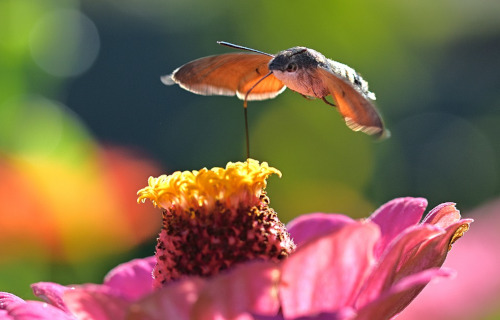
Hummingbird Hawk Moth Distribution, Habitat, and Ecology
The marvelous Hummingbird Hawk Moth possesses yet another strong evolutionary advantage. That’s the fact that it evolved as native to a huge portion of the globe. More precisely, its natural distribution covers much of Asia, Africa, and also Northern Europe.
Even beyond that, most individuals develop as relatively strong fliers. As a result, the species appears virtually anywhere in the hemisphere during the summer. This represents yet another manner in which it differentiates itself from the majority of its peers.
Adding even more to its resume, the amazing invertebrate also evolved as highly adaptable. Due to that trait, it often inhabits a wide variety of habitats. These include regions as diverse as forests, meadows, parks, and even private gardens around human habitations.
Unfortunately for its fans, though, it has a short lifespan. Because of this trait, however, it developed another helpful trait. The marvel of Nature breeds quickly. Therefore, anywhere from 2-4 generations are born in a single season. This often depends on the region, as well.
The mature adults of the Hummingbird Hawk Moth feed exclusively on nectar from plants such as the Red Valerian and Honeysuckle. Thankfully, the species itself, however, has few natural predators. This mainly holds true due to its incredible camouflage.
Green Milkweed Grasshopper
Green Milkweed Grasshopper Facts
- Next up in this compendium of these 5 Intriguing African Insects comes the remarkable product of evolution bearing the title of Green Milkweed Grasshopper.
- This brilliantly colored insect bears the descriptive and informative common name for several reasons. That’s not the only common term for the remarkable invertebrate, though. In point of fact, the creature has at least two alternate names.
- That’s because it’s also known to some as the African bush grasshopper, and the Green Stinkweed Locust. Professional researchers, meanwhile, know it by its scientific name. That’s the exceedingly hard to pronounce term of Phymateus viridipes.
- Regardless of which term one uses to refer to the insect, though, one thing stands out. That’s the fact that, like all locusts, it’s considered by some people to be a pest in some regions of the world. It sometimes damages crops ornamental plants.
- The Swedish entomologist Carl Stål gave it the technical name that it holds. That occurred when this researcher made the first official recognition of the creature. He made the original acknowledgement of it as a separate and distinct species in 1873.
- Like the great majority of its kindred, the Green Milkweed Grasshopper appears to be maintaining a sizeable population base. This further seems to hold true throughout the entirety of its natural range. The IUCN, therefore, has no listing for on its Red List.
- Although a large percentage of insects face serious threats, for the moment, it does not. Its tendency to reproduce in vast numbers provides it with some protection from the dangers now facing most species. Those consist of habitat loss and climate change.
Green Milkweed Grasshopper Physical Description
The fabulous Green Milkweed Grasshopper merits appreciation for more than just its physical appearance. This trait nonetheless also deserves its own share of admiration, though. Nevertheless, this insect is also an above-average sized variety of locust.
But the amazing traits of the arthropod do not stop there. That’s because, like many of its relatives, it displays a moderately strong degree of the physiological trait of sexual dimorphism. In its case, this characteristic manifests itself in terms of sheer physical size.
More precisely, the female typically attains a significantly greater body size than that of her male counterpart. Although the males remain smaller, females reach an average body length of 2.8 in (7 cm). The body of the insect itself develops as moderately stout.
Quite interestingly, the region immediately behind the head evolved a unique characteristic. That’s the presence of a grouping of small, protruding spines. Even more impressively, these generally develop with a bright red tip, making for a visually striking image.
Most of the body of the Green Milkweed Grasshopper, however, displays the namesake green shade. This also extends to the forewings of the invertebrate. The hindwings, though, display a far different pattern. These show a vivid blue and red combination.
- Kingdom: Animalia
- Phylum: Arthropoda
- Class: Insecta
- Order: Orthoptera
- Family: Pyrgomorphidae
- Genus: Phymateus
- Species: P. viridipes
Green Milkweed Grasshopper Distribution, Habitat, and Ecology
The usually unwelcome but nonetheless impressive Green Milkweed Grasshopper inhabits a moderately large section of the globe. That’s because it evolved as endemic to the continent of Africa. Sadly, though, the arthropod doesn’t appear in all areas of the region.
More precisely, the amazing invertebrate only seems to inhabit the southern regions of the continent. Within that range, however, it makes its presence known in every country. When it swarms, however, these groupings sometimes move beyond that usual area.
This remarkable work of evolution further displays a very strong versatility in its choice of habitats. Most individuals and groups appear in various regions of grassland. Individuals and smaller groupings also sometimes appear in cultivated regions such as gardens.
Within its native range, the arthropod frequently engages in extremely long migratory flights. These flights, however, usually occur at somewhat lower altitudes. During its periods of swarming activity, though, these swarms generally fly at significant altitudes.
The Green Milkweed Grasshopper also typically feeds opportunistically, like its many relatives. Though this can include crops and garden species, it mainly feeds on plants in the Stinkweed Family. At this time, it also often groups together on trees in large numbers.
Its prevalence for feeding on species in the Stinkweed Family provide it with an added benefit. Like all grasshoppers, it emits a noxious foam as a means of defense against predators. Due to its consumption of Stinkweed, however, its foam has a toxic nature.
African Monarch
African Monarch Facts
- Our next choice for inclusion in this gathering of 5 Intriguing African Insects is the beautiful winged wonder called the African Monarch.
- This magnificent Lepidoptera most frequently goes by the descriptive, as well as somewhat informative, common name presented herein. Yet, it also has several alternate names. These include the African queen, and, surprisingly, the plain tiger.
- Scientific professionals, however, such as researchers, typically refer to the invertebrate by its official name. That’s somewhat difficult to pronounce, though, for non-professionals. That’s because it bears the technical moniker of Danaus chrysippus.
- It further received that name due to the efforts of the renowned Swedish researcher, Carl Linnaeus. He accomplished the first formal recognition of the insect as a separate and distinct species. This scientifically noteworthy event occurred in the year 1758.
- Regardless of the term one chooses to use when referring to it, though, it’s a remarkable beauty. A total of three known subspecies also exist. Intriguingly, these share the same range of habitation. It’s truly a marvelous work of Nature and evolution.
- The stunning African Monarch also stands out for another reason. That’s because, unlike many species, it appears to be maintaining a population base that’s both sizeable and stable. This trend further seems to hold true throughout the entirety of its range.
- The IUCN, therefore, presently lists the Arthropod as Least Concern on its Red List. The creature nevertheless faces potential threats to its existence. Habitat loss due to human expansion qualifies as one. Its greatest danger, though, is likely climate change.
African Monarch Physical Description
The remarkable African Monarch impresses those who encounter it with its attributes. Sheer physical size, however, isn’t among the qualities on that particular list. That’s due to the fact that, regardless of its other notable aspects, it ranks as a medium-sized butterfly.
Mature adults attain an average wingspan measuring between 2.8 – 3.1 in (7 – 8 cm). Like many Arthropods, it also displays a slight degree of the physiological characteristic of sexual dimorphism. In its case, though, this trait does not manifest in terms of sheer size.
Males of this insect develop pronounced scent glands, which the female lacks entirely. With the exception of this physical structure, the genders appear virtually indistinguishable. The bodies of both genders also display a basic black shade, with many white spots.
The difference in overall appearance is further augmented, though, by the exact patterns of color. That’s due to the fact that precise combinations vary between individuals, sometimes quite significantly. Certain basic patterns of coloration do remain, however.
Both the upper and lower wings of the African Monarch display a predominantly bright orange hue. On the upperside, the tips of the forewing manifest a black border. White spots also appear there. The hindwing displays the black border, but without the spots.
The underside of the wings also presents a principally orange shade. Here, though, it’s a somewhat lighter shade. The same black border appears, but both wings also have white spots there. The hindwing also presents three small black spots around a central wing cell.
- Kingdom: Animalia
- Phylum: Arthropoda
- Class: Insecta
- Order: Lepidoptera
- Family: Nymphalidae
- Genus: Danaus
- Species: D. chrysippus
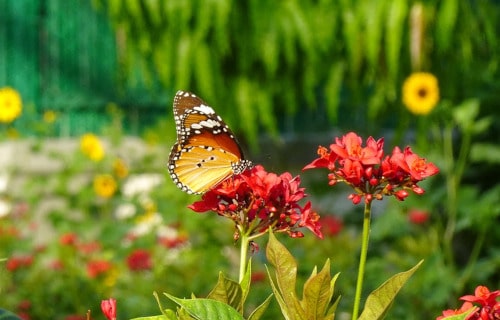
African Monarch Distribution, Habitat, and Ecology
Fortunately, for those who appreciate Nature, the dazzling African Monarch apparently evolved as native to a relatively broad swathe of the globe. As the common name itself clearly indicates, this zone of habitation includes virtually the entire continent of Africa.
Its presence isn’t restricted solely to that region of the world, however. That’s because it also appears in an impressive array of other areas. This includes much of Asia, including all of the Indian subcontinent. The insect also appears in Australia, and some Pacific islands!
It further enhances its survival capability by displaying an impressive adaptability in regards to its precise habitat. It does nonetheless demonstrate a preference for one specific type of habitat. The intrepid insect demonstrates a strong fondness for arid, open areas.
Yet, due to its flexibility in terms of where it lives, it also makes appearances in a wide varity of habitats. These include such areas as mountains, deciduous forests, and even deserts and gardens. It seems comfortable at altitudes ranging from sea level to 4,900 ft (1,494 m).
As often happens in Nature, the delicate beauty of the African Monarch conceals a rather surprising secret. Despite its physical fragility, it has few natural predators. That’s due to the fact that its tiny body contains high levels of toxic compounds, called cardenolides.
These originate with its diet. The adults consume nectar from various local flowering plants. The larval form, however, feeds mainly on several plants, but most especially Milkweed. The toxins then accumulate in its body, making it unpalatable to most predators.
Spiny Flower Mantis
Spiny Flower Mantis Facts
- The next species in this compilation of these 5 Intriguing Insects of Africa bears the descriptive term of the Spiny Flower Mantis.
- As is easy to see, the descriptive term we’re employing in this article forms the generally accepted common name of a most unusual species of mantis. Its much less pronounceable scientific name remains that of the Pseudocreobotra wahlbergii.
- But, regardless of which term one employs to refer to this magnificent creature, it remains a truly impressive variety of invertebrate. In addition, although all mantises are masters of camouflage, this species takes that to another level.
- Distinctly, mature adults of the species, along with their adaptive coloring, actually possess numerous spines. These distinctive appendages appear like a tree branch, thus serving as the source of the common name, along their sides.
- Further, newborn nymphs of the creature actually look nothing like a mantis at all. In point of fact, these closely resemble small, black ants. Quite fortunately, for the moment, its population in the wild appears to be stable and sufficient.
- This holds true throughout its natural range. The IUCN therefore has no listing for the Spiny Flower Mantis. But, it should be considered to be at potential risk, at the least. This holds true due to the ongoing effects of habit loss and climate change.
Spiny Flower Mantis Physical Description
Quite notably, the Spiny Flower Mantis does impress those who encounter it. Yet, the invertebrate doesn’t do so based on sheer physical size. That’s because this tiny insect, although truly quite remarkable in other ways, ranks as smaller than many related species.
But, while it may not share their size, it does share one trait in common with its relatives. That’s the unmistakable fact that it does obviously display the physiological characteristic of sexual dimorphism. In its case, this trait does not simply manifest itself in terms of size.
Both genders of the arthropod attain an average adult size measuring about 1.5 in (3.8 cm) in total length. Further, the coloring, though quite variable, usually includes a green background. Nonetheless, it can present other shades, such as pink, red, and yellow.
But, it also presents a prominent eye spot on the forewing. This shows black, green, and cream. The gender-based differences in the Spiny Flower Mantis also manifests in terms of the spines it has. Only females of the species display the spines for which it remains known.
- Kingdom: Animalia
- Phylum: Arthropoda
- Class: Insecta
- Order: Mantodea
- Family: Hymenopodidae
- Genus: Pseudocreobotra
- Species: P. wahlbergi
Spiny Flower Mantis Distribution, Habitat, and Ecology
Quite fortunately for it, the supremely astonishing Spiny Flower Mantis evolved as native to a comparatively broad section of the world. In point of fact, to the surprise of some people, it evolved as endemic to the great majority of the continent of Africa.
More specifically, though, the native range of the insect consists of the region best known as sub-Saharan Africa. Further, within that already extensive area, this highly resourceful arthropod inhabits a great many different types of environment.
These areas of habitation nevertheless all have one thing in common. That’s the fact that the amazing species requires relatively high humidity levels. As a result, within its overall territory, it inhabits almost any area with sufficient humidity.
But, the beautiful Spiny Flower Mantis does show a highly marked preference for areas with extremely abundant foliage, including a large number of flowering plants. This type of region also quite frequently includes areas of jungle.
It further prefers such habitats because the conditions provide both concealment and abundant prey. Like all mantises, this particular arthropod evolved as a predatory carnivore. Its preferred prey consists of various flying insects, and spiders.
Nonetheless, if these remain unavailable, it will consume virtually any insect it can catch. Finally, again like others of its kind, this marvel of Nature displays cannibalistic tendencies after mating. This remains one of the most amazing traits of all mantises.
East African Lowland Honey Bee
East African Lowland Honey Bee Facts
- Closing out this article about these 5 Intriguing African Insects is the species bearing the title of the East African Lowland Honey Bee.
- This delicate natural marvel is most frequently referred to by the lengthy name that it holds due to its territorial range. For the moment, it has no other broadly accepted general name. While uncommon, that’s certainly not unknown in science.
- Its scientific name also stands out for its length, relative to others. Like most such terms, that’s somewhat difficult for the layperson to pronounce without some difficulty. That’s because it holds the technical moniker of Apis mellifera scutellata.
- Ironically, it received that lengthy title due to the efforts of the French entomologist, Amédée Louis Michel le Peletier, comte de Saint-Fargeau. The scientist recorded the first official recognition of the insect. That noteworthy deed occurred in the year 1836.
- Though intriguing in its own right, it actually represents a subspecies of another well-known inverebrate. That’s the western honey bee, with which it shares a large part of its range. It’s also known to be one of the ancestors of the so-called killer bees.
- Presently, the East African Lowland Honey Bee seems to be maintaining a stable and sufficient population base. That condition further appears to hold true across its natural range. The IUCN therefore has no listing for the insect at this time.
- It nevertheless faces several potential threats to its continued existence. These include such dnagers as habitat loss and the introduction of non-native species. It also now faces the threat posed by ongoing climate change, like all creatures around the globe.
East African Lowland Honey Bee Physical Description
The East African Lowland Honey Bee captures the imagination of many people, like most of its many relatives. Yet, in terms of sheer appearance, the invertebrate remains remarkably similar to many of those numerous kin. That’s especially true of the European bee.
Like the vast majority of similar species, this creature displays the physiological characteristic known as sexual dimorphism. Yet, again following their example, it does so in a manner differing from other animals. It’s a colonial species, with the queens being larger.
As a general principle, though, it’s slightly smaller in all dimensions than many of its relatives. That includes the above-mentioned cousin, as well. The overall construction and coloring of the body once again follows well-established norms for all types of honey bee.
The lovely East African Lowland Honey Bee possesses a smll body formed of three separate segments. These sections consist of the small head, thorax, and abdomen. A stinger, comparatively somewhat short in length, also extends from the base of the abdomen.
The abdomen displays a light brown shade, crossed by a series of narrow yellow bands. It has six thin, barbed legs, and small, transparent wings. Its eyes also develop as large in relation to the head itself. The entire body has a covering of a thin, light-colored fuzz.
- Kingdom: Animalia
- Phylum: Arthropoda
- Class: Insecta
- Order: Hymenoptera
- Family: Apidae
- Genus: Apis
- Species: A. mellifera
- Subspecies: A. m. scutellata
East African Lowland Honey Bee Location, Habitat, and Ecology
The East African Honey Lowlnd Honey Bee evolved as native to a specific portion of the globe. Given its very name, that precise section of the earth likely won’t surprise anyone. That’s due to the fact that, as the name clearly indicates, it’s native to portions of Africa.
Yet it’s not solely present in the most eastern sections, as that name suggests. The intrepid Arthropod also lives in parts of southern and central Africa as well. That range extends from all but the most sourtherly edge of South Africa, northwward as far as southern Ethiopia.
Within this range, the invertebrate displays a moderate degree of adaptability in its choice of habitat. It mainly appears in regions consisting of grasslands and savannas. The bee does, however, understandably avoid the more arid regions, due to a lack of sufficient vegetation.
This marvel of Nature constructs its nest opportunistically, like many bees, and does so in a wide range of locations. So long as the potential site offers the colony protection, the bee will make use of it. It does show a preference for such locations as rock crevices, though.
The East African Lowland Honey Bee lives in colonies. These average between 40,000 – 80,000 individuals. The majority of activity within the next occurs during the day, especially in the cooler, early morning. During the heat of the day, the members reduce activity.
Workers gather pollen and nectar from a wide range of locally available flowering plants. The pollen is collected on the legs, while it stores the nectar in its stomach. Sadly, it has many predators. These include birds, spiders, reptiles, frogs, dragonflies, and many others.
5 Intriguing African Insects
We hope that each of you enjoyed reading, and hopefully learning from, this article we’ve written about these 5 Intriguing African Insects. It’s also our hope that doing so has left you with either a new or renewed appreciation for such marvels of Nature.
Unfortunately, however, many of their relatives around the globe now find themselves facing strong threats to their continued existence as a species. Many of those dangers, in fact, stem from the actions of mankind. We must do all we can to protect and preserve them all.
Check out our other articles on 5 Remarkable United States Reptiles, Earth’s Geothermal Marvels, 5 Fabulous Mammals of Florida, Incredible Sharks of the World
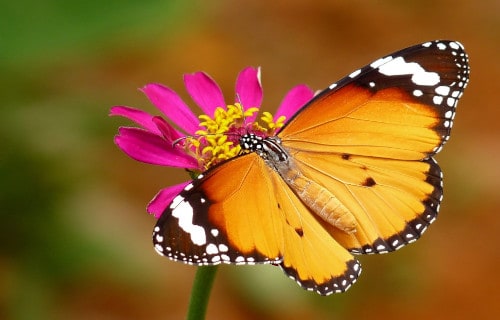
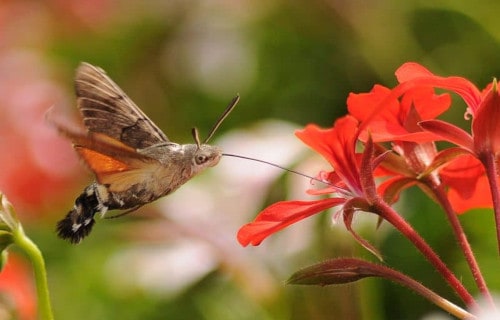
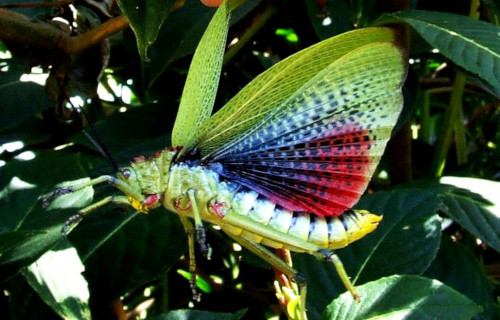
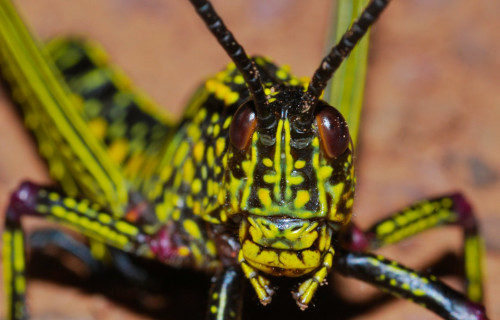
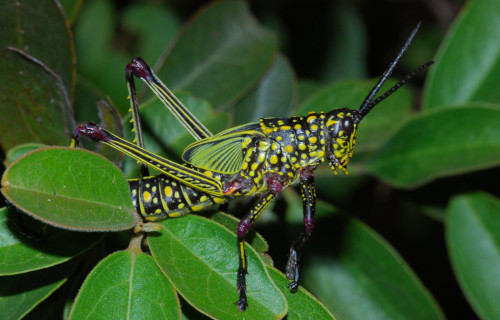
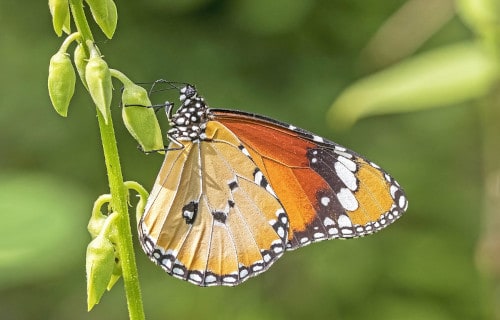
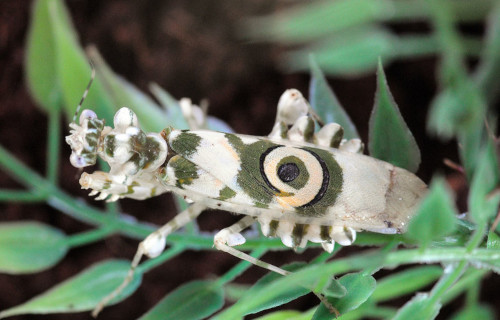
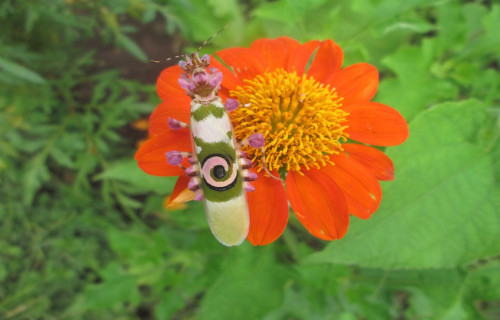
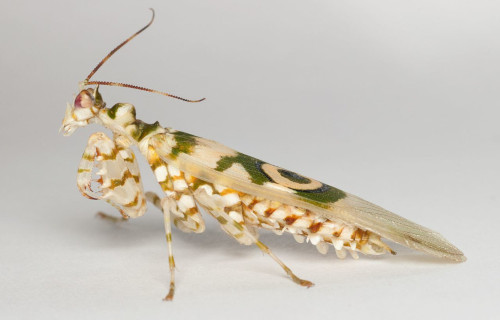
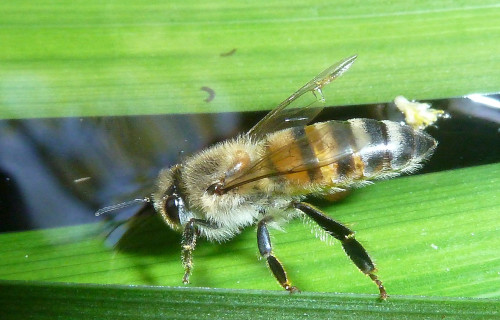









Leave a Reply